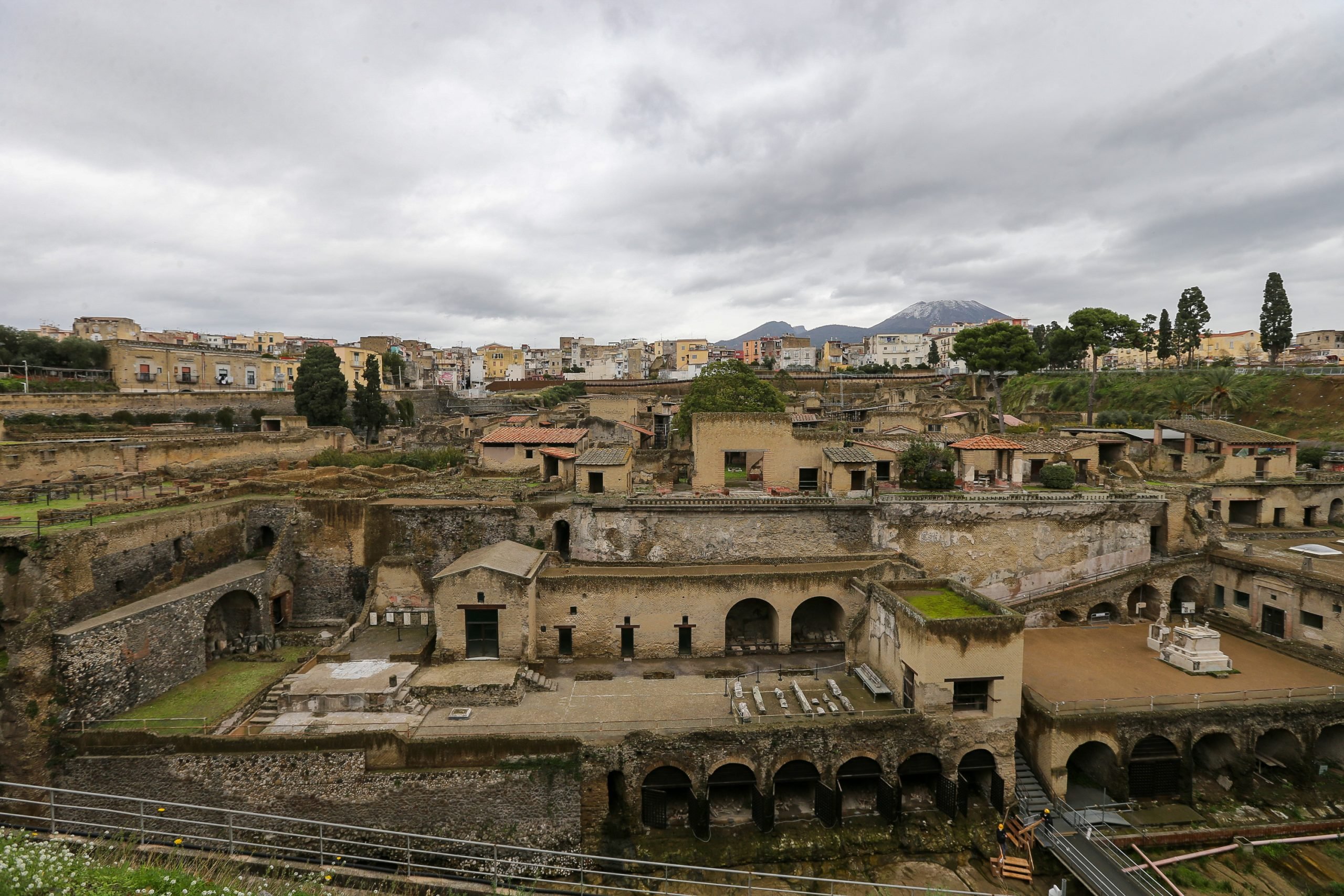
About 800 Herculaneum papyri, scrolls carbonized by the eruption of Mount Vesuvius in 79 C.E., were recently virtually unrolled and deciphered by researchers using artificial intelligence and digital imaging. Excited by their ability to now read the scrolls, archaeologists are eager to dig beyond the site of Herculaneum in Italy for more artifacts, reports The Times, but the local community isn’t having it.
Experts predict that based on the scale of the ancient Roman Villa of the Papyri that its library could hold 40,000 scrolls that might contain lost knowledge from some of the greatest writers and thinkers of history including Sophocles, Epicurus, and Aristotle. About 1,800 scrolls were excavated in digs between 1752 and 1754.
“We need to explore because it is the only known ancient library where texts have been preserved,” Richard Janko, a papyrologist at the University of Michigan, told the Times, adding he was eager to find works by Sappho and Archimedes. “Until now, we were told that if we found more scrolls we would simply damage them and be unable to read them,” he said. “That objection has now been taken away.”
A historian, Robert Fowler at Bristol University, added that the 18th-century digs had missed the ground floor of the villa. The site could also be threatened by another volcanic eruption. “If we can get into the villa now,” he told the Times, “I think we should.”
The only problem? The trove of treasures is located beneath the homes of neighboring residents. Tunnels dug in the 18th-century lead visitors to two rooms in the villa containing the scrolls, one of which is situated under modern housing. Experts say further excavations would require the complete or partial demolition of at least seven houses, a police station, and perhaps the town hall. Francesco Sirano, the director of the Herculaneum archaeological site, said his own father’s house was seized to make way for earlier digs.
“Demolishing our homes is a problem. Where would we go? Will they give us a house?” Liberato Raia, a plumber who lives in one of the houses, told the Times.
Another resident, Franca Occulto, told the paper that she was unconcerned about the ancient Roman relics under her feet: “I don’t think about it.”
According to Sirano, further work at the site would also cost some €150 million ($162 million), not counting the court cases brought by home-owners. That sum is “far more than the site’s annual budget of €12 million ($12.9 million),” he added.
“This archaeology belongs to the local people as much as to the academics. The social impact would be immense,” he said. “As an archaeologist, I love to dig but my job is to rediscover the history of a place, not hunt for treasure.”